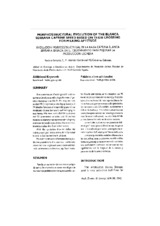Morphostructural evolution of the Blanca Serrana caprine breed based on their crossing for milking aptitude
Evolución morfoestructural de la raza caprina Blanca Serrana basada en su cruzamiento para mejorar la producción lechera
Autor
Rodero Serrano, E.
Gutiérrez Cabezas, M.J.
Herrera García, M.
Editor
Universidad de Córdoba, Servicio de PublicacionesFecha
1992Materia
Razas minoritariasGanado caprino
METS:
Mostrar el registro METSPREMIS:
Mostrar el registro PREMISMetadatos
Mostrar el registro completo del ítemResumen
The conservation of endangered breeds requires to develope an ethnological census of genetic resources available. In this way. we have studied 98 (only meat producing aptitude) and 79 (double function of meat-milk) goats of the Andalusian Blanca Serrana breed belonging to two farms. We have controlled 14 qualitative and 10 quantitative variables and 11 derived indexes. tocharacterize the breed ethnologically and show its racial standard and also. to complete and actualize data from other autors. With the qualitative data we define the visible phenotypic profile as it is done for other breeds in Europe and the N of Spain. Host of the variables differentiate both productive populations; the canonical coefficients showthat head length and cannon bone and thoracic perimeters are the most significant ones Para la conservación de una raza en peligro de extinción se precisa un censo etnológico de los recursos genéticos con los que se puede contar. Desde esta óptica. se ha trabajado con 98 animales (sólo producci6n de carne) y 79 (doble aptitud carne-leche) de raza caprina Blanca Serrana Andaluza pertenecientes a dos ganaderías. Se han controlado 10 medidas cuantitativas, 11 índices derivados y 14 variables cualitativas. que se emplean para caracterizar etnológicamente la raza. Se expone el estándar racial. completando y actualizando los valores de otros autores. Las variables cualitativas han permitido definir el perfil fenotípico visible de la raza. lo que se une a lo realizado por otros investigadores en razas caprinas de Europa y del Norte de España. La mayor parte de las variables diferencian a las dos poblaciones productivas establececidas como se aprecia por la represencaci6n can6nlca. Los coeficientes canónicos indican que las más significativas son la longitud de la cabeza y perímetros de la caña y torácico.

